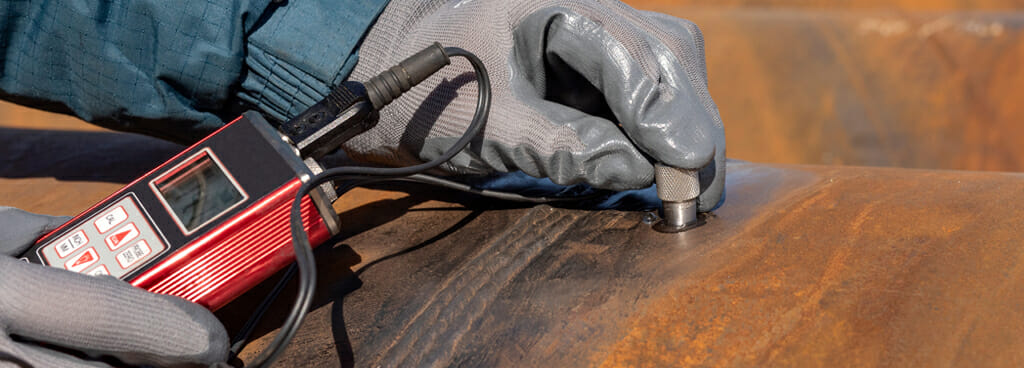Comprehending the Relevance of Welding Inspection in Ensuring Structural Integrity
Welding assessment plays a crucial function in preserving structural integrity within the construction market, serving as an essential guard against prospective failings. By methodically recognizing common problems-- such as porosity and insufficient fusion-- assessments not just support top quality standards but additionally make certain compliance with safety regulations.
Duty of Welding in Construction

In addition to architectural applications, welding is essential in the fabrication of both detailed and large-scale elements. It enables the modification of components, enabling designers and designers to bring their designs to fruition. The convenience of welding methods, including MIG, TIG, and arc welding, permits the efficient joining of various materials and densities, satisfying details task demands.
Moreover, the advancement of welding modern technologies has caused improved effectiveness and accuracy in construction procedures. Automated welding systems improve productivity while reducing human error, thus advertising better end results. As a result, the function of welding in building prolongs past plain setting up; it is a crucial consider making certain the safety, longevity, and overall stability of frameworks, highlighting its significance in the modern building landscape.
Typical Welding Issues
The integrity of bonded frameworks is substantially influenced by the existence of problems that can compromise their efficiency and safety and security. Common welding issues consist of porosity, insufficient combination, undercutting, and slag inclusions, each of which can significantly affect the overall stamina and toughness of welded joints.
Porosity happens when gas bubbles are trapped in the weld metal, leading to lowered tensile stamina. Insufficient blend arises when the weld metal does not correctly bond with the base metal, resulting in weak joints susceptible to failure.
Various other flaws, such as excessive spatter and imbalance, can likewise add to structural weak points. Identifying and attending to these defects during the welding process is crucial to guarantee the dependability of the last framework. Awareness of these common welding issues is essential for assessors and designers to keep the integrity of bonded structures and guarantee long-lasting security and efficiency.
Benefits of Welding Examination
Making certain the integrity of welded frameworks depends greatly on the effectiveness of welding assessment processes. The key benefit of welding evaluation is the early discovery of potential issues, which can dramatically lower the threat of devastating failures. By recognizing problems such as cracks, incomplete blend, or porosity before they escalate, inspection procedures help maintain the security and integrity of frameworks.
Moreover, welding assessment enhances conformity with industry requirements and laws. Sticking to these needs is essential for avoiding legal effects and guaranteeing that jobs satisfy needed safety and security methods. This conformity also promotes a society of quality control, advertising ideal methods amongst welding employees.
Additionally, regular assessment can lead to cost savings gradually. By minimizing the probability of rework or repair services due to welding defects, companies can designate resources a lot more effectively, ultimately boosting efficiency.

Inspection Techniques and Specifications
Efficient examination methods and criteria are crucial components of maintaining the integrity of welded frameworks. Common assessment strategies include aesthetic evaluation, ultrasonic testing, radiographic testing, and magnetic particle testing.
Visual evaluation is often the primary step, allowing examiners to determine surface problems such as cracks or inappropriate bead shapes. Ultrasonic screening utilizes high-frequency sound waves to find interior imperfections, while radiographic screening makes use of X-rays or gamma rays to reveal hidden inconsistencies within the weld. Magnetic particle screening works for discovering surface and near-surface problems in ferromagnetic materials.
Specifications play a crucial role in guiding these examination procedures, with companies such as the American Welding Culture (AWS) and the International Company for Standardization (ISO) supplying comprehensive guidelines. Compliance Full Report with these standards not only ensures the top quality of welds but likewise cultivates trust among stakeholders in the architectural integrity of the finished product. Following established examination methods and requirements is basic to attaining lasting and trusted bonded structures.
Regulatory Conformity and Safety And Security
Regulatory compliance is important for securing the safety and honesty of bonded structures. Sticking to established codes and criteria, such as those established by the American Welding Culture (AWS) and the American National Standards Institute (ANSI), ensures that welding methods satisfy rigorous safety and quality requirements. These laws are designed to stop failures that could result in disastrous Homepage incidents, injuries, or death.
Conformity with these laws includes regular assessments and assessments throughout the welding procedure. Qualified assessors evaluate welds for top quality, adherence, and stamina to specs, guaranteeing that any kind of variances are promptly addressed. This proactive method not just improves check my site the architectural honesty of welded parts yet likewise mitigates threats related to non-compliance.
In addition, regulative bodies often need documents of evaluations and conformity documents, which act as legal evidence of adherence to safety and security requirements. Firms that prioritize regulative conformity not just protect their workforce and clients however likewise enhance their track record within the market. Inevitably, understanding and executing these guidelines is crucial for any type of company intending to keep high safety standards and achieve long-lasting functional success in welding methods.
Verdict
In final thought, welding inspection plays an important function in preserving structural integrity within the building and construction sector. Inevitably, a dedication to rigorous welding evaluation is essential for safeguarding both the workforce and the stability of built frameworks.
The adaptability of welding methods, including MIG, TIG, and arc welding, allows for the efficient joining of different products and thicknesses, catering to specific task requirements.
Ensuring the honesty of bonded frameworks counts heavily on the effectiveness of welding examination processes (Welding Inspection Milwaukee). In recap, the benefits of welding examination are complex, important for making certain structural stability and functional excellence

Adhering to well established codes and criteria, such as those set by the American Welding Culture (AWS) and the American National Criteria Institute (ANSI), makes sure that welding practices fulfill rigid security and top quality requirements. Eventually, a dedication to rigorous welding assessment is essential for protecting both the workforce and the integrity of created structures.